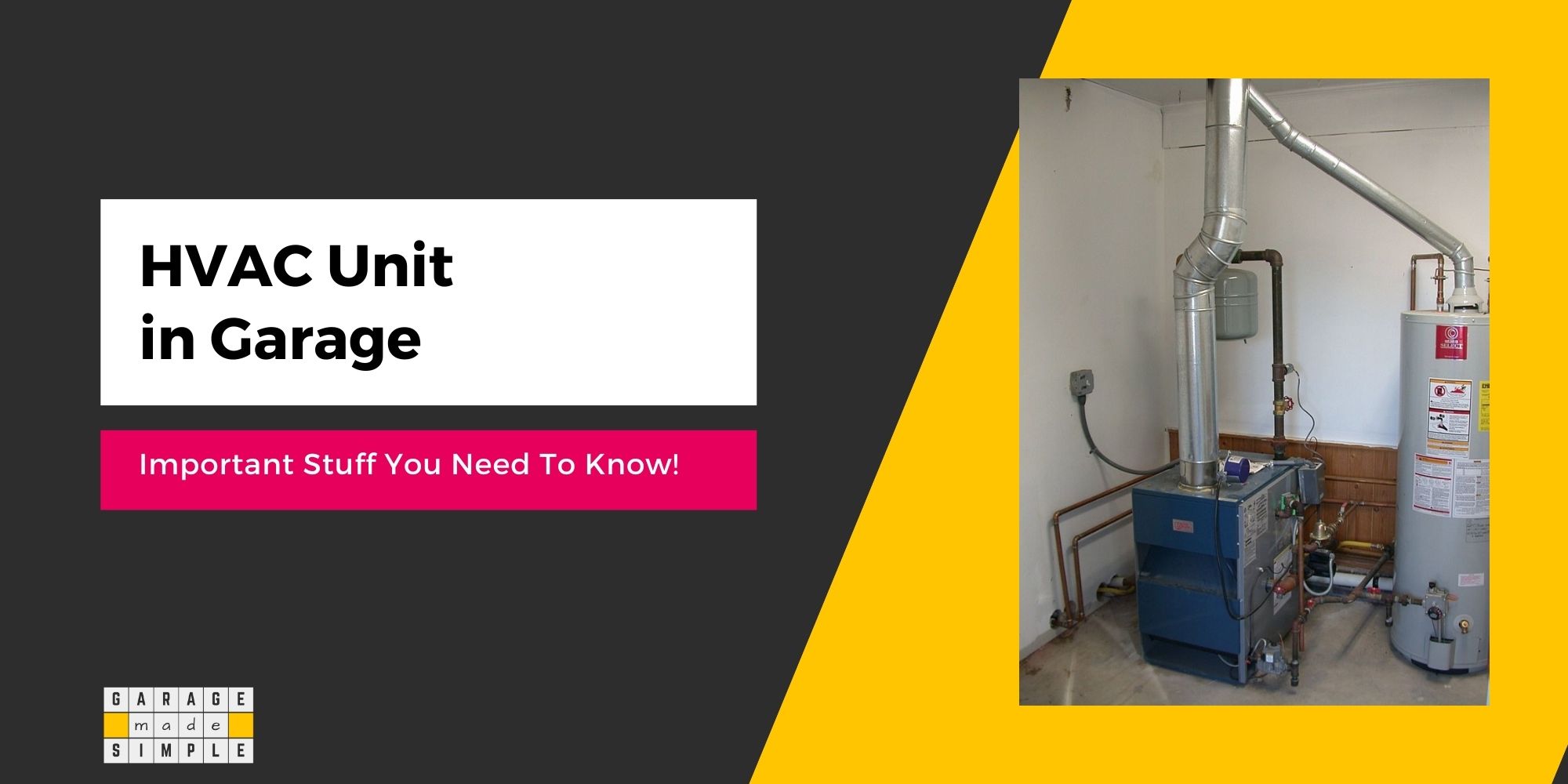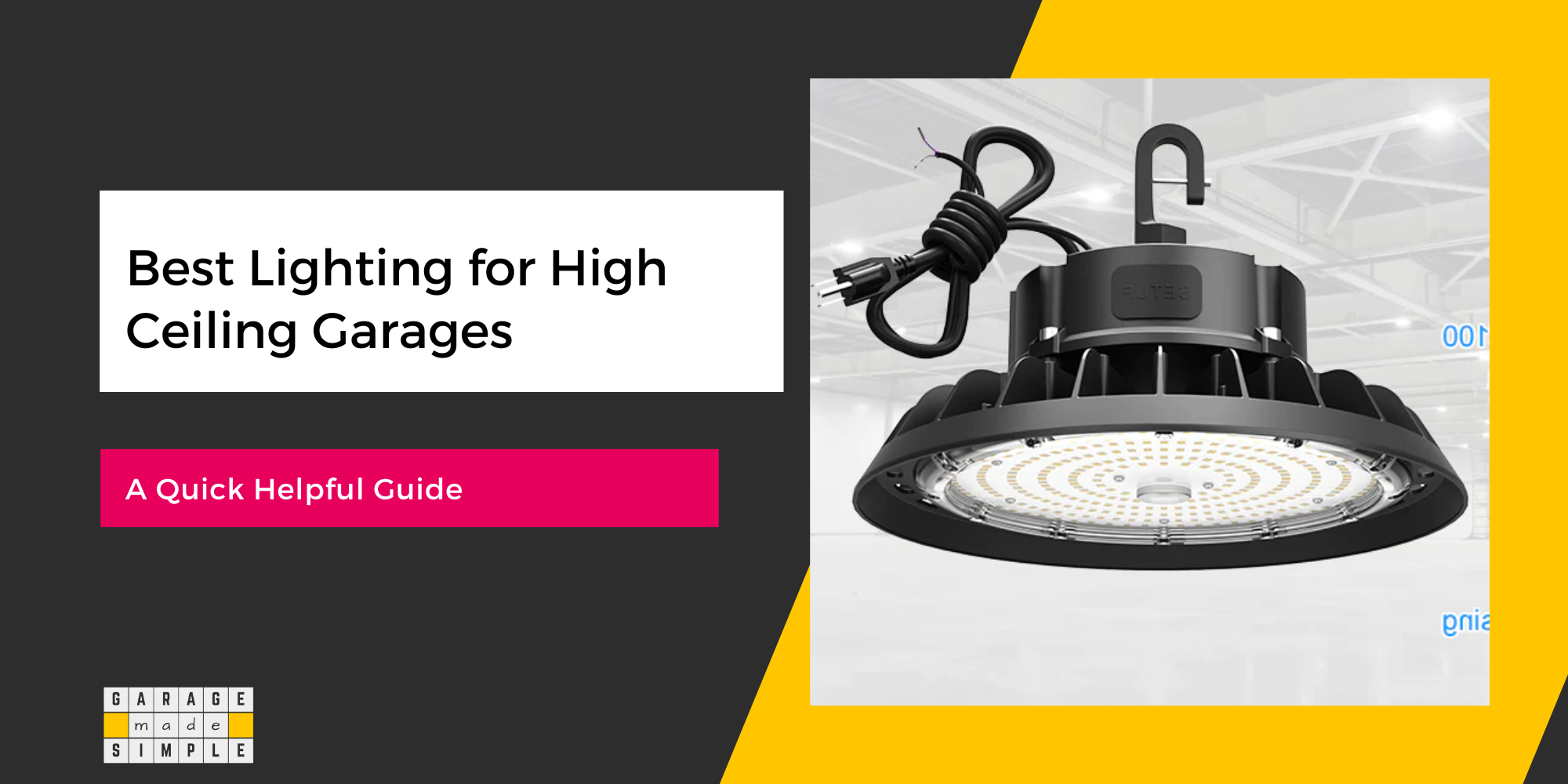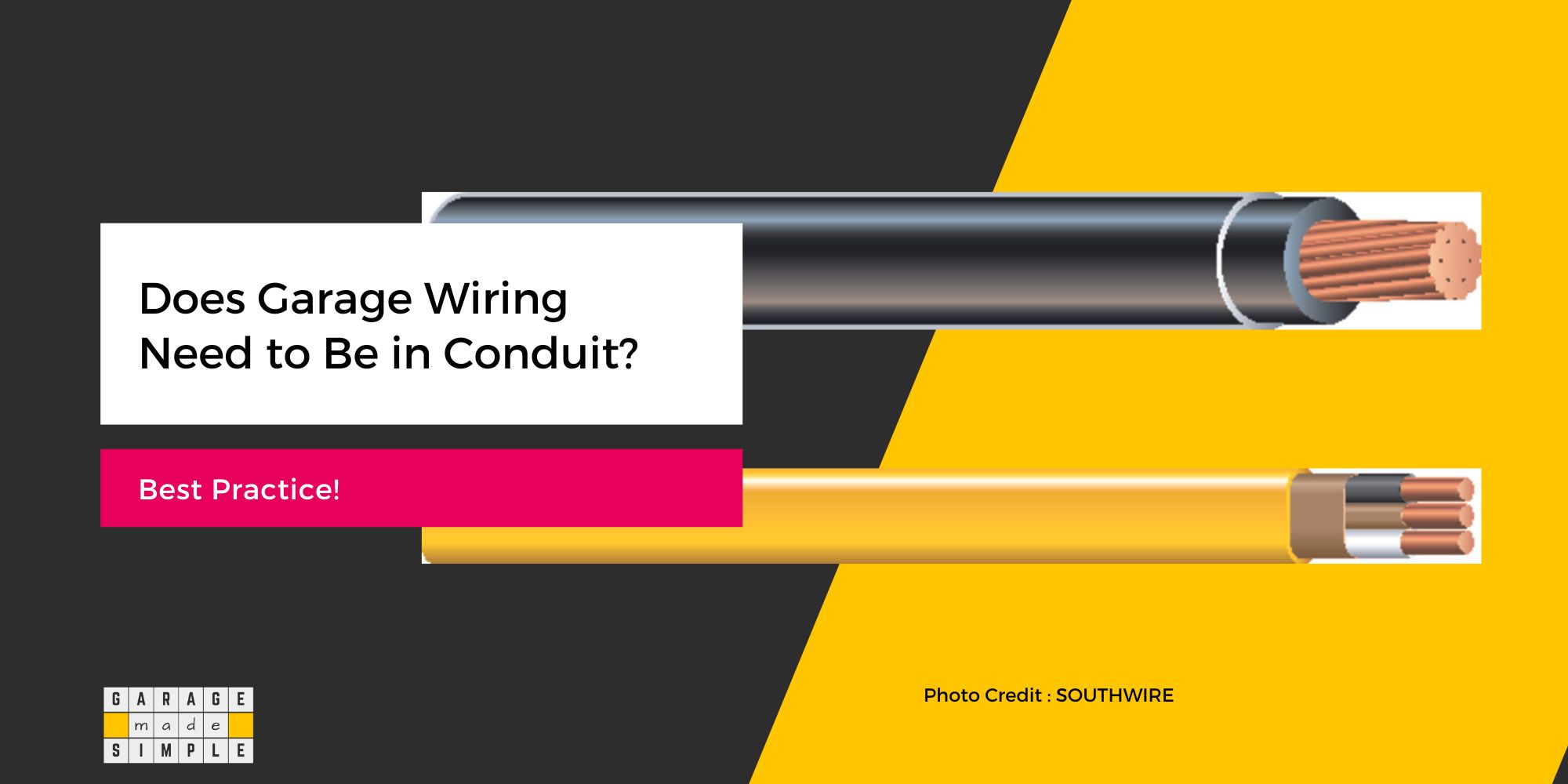Lumens for Garage (Per Square Foot) Calculator + 8 Superb Tips
garagemadesimple.com is a participant in the Amazon Services LLC Associates Program, an affiliate advertising program designed to provide a means for sites to earn advertising fees by advertising and linking to Amazon.com . The website is also an affiliate of a few other brands.
How Many Lumens Do I Need for Garage Lighting?
Do you feel that your garage is not bright enough? Well, you are not alone. However, as garage size varies, lumens for garage (per square foot) and not just lumens for garage is important.
You may need 5,000 – 6,000 lumens for a standard one car garage (12’X20′) and 8,000 – 10,000 lumens for a standard two car garage (20’X20′). However, if you prefer the brightness level to match that of an automotive showroom, you will need 12,000 lumens for a 1 car and 20,000 lumens for a 2 car garage.
The lumens required to light up any space is calculated by multiplying the area (square feet) by the brightness level required (lumens per square foot).
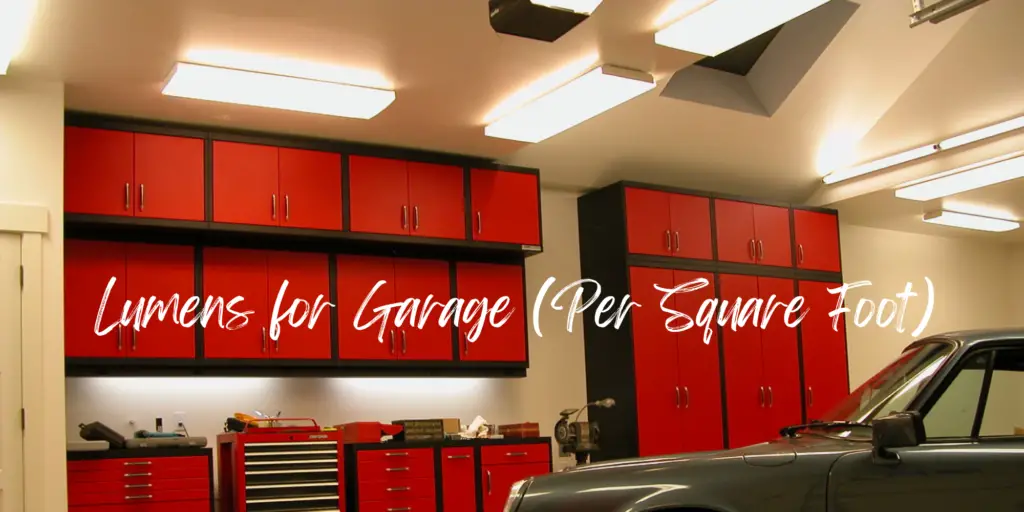
When it comes to deciding on the lumens for garage (per square foot), there are 2 important factors to keep in mind:
- There is no clear standard for lumens for garage (per square foot). The Illuminating Engineering Society (IES) has recommendations for residential, commercial and industrial zones. Some websites may apply the recommendation for an “automotive showroom” to a residential garage, clearly an overkill.
- The brightness level, calculated as lumens for garage (per square foot) need not be the same in every part of the garage. Quite obviously, you do not want the storage area in your garage to be the as bright as the workshop area.
- For the same lighting technology, more brightness requirement will translate into more initial and operating cost.
How Is Lighting Classified?
According to Wikipedia
Lighting is classified by intended use as general (aka ambient), accent, or task lighting, depending largely on the distribution of the light produced by the fixture.
WIKIPEDIA
The three architectural lighting categories in the context of a residential garage are:
- Ambient lighting: Ambient lighting is generally installed in a recessed area at the top of a wall, or in the garage ceiling. Ambient lighting is a good choice for general lighting in a garage, as it has a soft, even glow and does not create a glare. The main objective should be to create enough light on the garage floor for safe parking and walking around.
- Task lighting: Task lighting is used to illuminate specific areas of a garage, such as a workbench or worktable.
- Accent lighting: Accent lighting is used to highlight architectural features or create visual interest in a garage. Spotlights or track lights can be used highlight trophies, surfboards, etc.
By combining different types of architectural lighting and using the correct lumens per square foot for each type, you can create a well-lit garage that is both functional and stylish.
Watts, Lumens, Color Temperature & Lumens for Garage (Per Square Foot)
Sometimes, the wattage of a light source, such as a bulb or a tube light, is considered as the level of brightness it will produce. This is not true.
Wattage of a light source is a measure of the energy consumption of the light source. The actual light emitted by the light source, on the other hand, is measured in lumens.
There is no correlation between watts and lumens unless the light source is using the same technology. Within the same lighting technology, there is a positive correlation between watts and lumens. Lumens are higher if watts are higher.
However, lumens do not correlate with watts, if the lighting technology is not the same. A good example is that a 9-10 W LED bulb emits the same lumens as a 60 W incandescent light bulb.
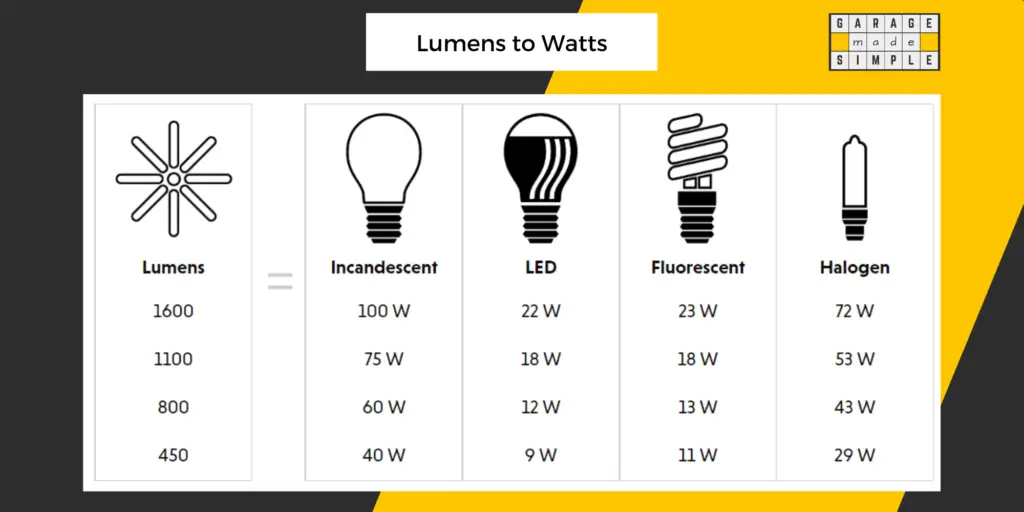
So next time you are planning to replace the lights in your garage you should consider the total lumens that you require, and not the wattage you require. Ideally you want the required lumens with low watts so that your energy costs are low.
The height at which the light source is placed has an inverse effect on the brightness in the garage. Higher the light bulb lower will be the brightness on the garage floor. This is the reason you may require to use shop lights rather than recessed lights in areas where you require higher brightness, such as your DIY workbench.
Actually, the real measurement of brightness on the garage floor or on the work surface is lumens per square feet or foot candles, rather than lumens of a light source.
There is also a misconception that light with a higher color temperature is brighter than that with a lower color temperature. This is also not true.
There is no correlation between lumens and color temperature of a light source. In fact there is no calculator which will convert lumens (brightness) to Kelvin (warmth or coolness) of the light source.
Having said that, cool light is crisp and brings out the contrasts better. It is therefore helpful to use cool light for workspaces.
In a nutshell:
- Watt is a measure of energy consumption
- Lumen is a measure of the light output
- Color Temperature is an indication of the hue of the white light
- Lumens for Garage (per square foot) is the measure of brightness
How to Calculate Lumens for Garage?
To calculate the lumens for garage you need to multiply the area of the garage with the recommended or desired Lumens for Garage (Per Square Foot), a measure of brightness level.
Calculating the area of the garage is quite simple. You just need to multiply the depth of the garage with the width of the garage. So if your garage is 24 feet deep and 24 feet wide then the area would be 576 ft.².
The Illuminating Engineering Society (IES) has recommendations for residential, commercial and industrial zones. Architects and lighting professionals use this guideline to determine the lumens per square foot requirement for a specific space and client.
There is no standard recommendation for the brightness for residential garages. Most recommendations are for commercial buildings. Alcon Lighting has a pdf “How to determine how many lumens you’ll need to properly light your space”.
The recommendation for an automotive showroom is 50 lumens per square foot. This level of brightness is necessary for car retailing. However, this is way too high for just parking your car in a residential garage.
The recommendation for a parking garage is 10 lumens per square foot and that for a service garage is 20 lumens per square foot. The recommendation for a gas station canopy is 10-15 lumens per square foot and that for a warehouse is 20 lumens per square foot.
For a residential garage, a brightness level of 20 lumens per square foot is more than adequate for areas designated for car parking or storage.
On the other hand the recommendation for assembly work ranges from 30 to 100 lumens per square foot, depending on the type of assembly. 100 lumens per square foot is necessary only for jobs requiring fine workmanship or assembly of very small parts.
For most garage workshops 50 lumens per square foot should be reasonably bright. Nonetheless, in this article I have considered a required brightness level of 70 lumens per square foot for a garage workshop.
Lumens for Garage Calculator
Feel free to use the below to calculate Lumens for your garage. Just plug in the size of your garage and the level of brightness, in (Lumens Per Square Foot), you desire.
Lumens for Garage Calculator
How Many Lumens for a 24X24 Garage?
The lumen requirement is calculated by multiplying the floor area in square feet with the desired (or required) brightness level in lumens per square foot or foot candles.
To quickly calculate the total lumens required from the lights in your garage you can use this rule of thumb:
(Workshop area X 70) + (Remaining Garage Area X 20)
As an example, let us say your two car garage with a workshop has an overall dimensions of 24’X24′ (576 sq. ft.). Let us say 20’X20′ (400 sq. ft.) is dedicated to parking & storage space and the remaining 176 sq. ft. is to be used as a garage workshop.
Using the above rule of thumb the lumen requirement of your garage will be:
(176 X 70) + (400 X 20) = 12,320 + 8,000 = 20,320 lumens
So, the lumens required for 24’X24′ garage lighting is around 20,000 lumens.
How Many Lumens for a One Car Garage?
A standard one car garage is 12 feet wide and 20 feet deep. Therefore, the area of the garage is 240 ft.². This is just enough to park a car and manage some storage. There is no room for a workshop in a standard 1 car garage.
Since there is no workshop, a brightness level of 20 lumens per square foot will be sufficient. Multiply the area (240 square feet) with 20 and you get the lumens required for standard 1 car garage lighting as 4,800 lumens (or 5,000 lumens to round up).
How Many Lumens for a Two Car Garage?
A standard two car garage is 20 feet wide and 20 feet deep. Therefore, the area of the garage is 400 ft.². The space is not enough to have a garage workshop. The parking & storage area requires a brightness of 20 lumen.
Multiply the two parameters and you get 8,000 lumens as the lighting requirement for a standard two car garage without a workshop.
How Should I Space the Lights?
While it is simple to use every light source with the same lumen rating and equally spread them across the ceiling area, it is not the most efficient way to light up your garage.
There is no point in having the same level of brightness in the storage area or in the car parking area, as in the DIY workshop area. Intelligent lighting configuration would suggest that you use less lumens in some areas and more lumens in other areas.
In case you wish to have all the lights equally spaced them you can choose light sources of different lumens for different areas. For example, you may choose light sources of 1600 lumens each for the workshop area and only 400 lumens each for the parking and storage area.
Another way to have differential lighting brightness across different sections of your garage, is to use recessed lighting for the parking area but shop lights for the DIY workshop area.
8 Superb Tips to Improve Your Garage Lighting
1. Use a Mix of the 3 Lighting Classifications
Garages are often used for multiple purposes, so it’s important to have a variety of lighting configurations. Ambient lighting provides general illumination, task lighting is brighter and focused on specific areas, and accent lighting highlights specific features.
2. Choose Fixture According to Category and Function
When choosing fixtures, consider where you’ll be using them and what type of lighting you need. For example, you may want to go for recessed lights in the garage ceiling for ambient lighting but choose shop lights for the workshop zone.
Installing garage can lights, which is the same as recessed lights in garage ceiling, gives you a more headspace and a clean look as there is nothing hanging or protruding below the garage ceiling.
Sunco 12 Pack LED Recessed Lighting 6 Inch
- Adjustable clips, suitable for both 5″ and 6″ cans.
- Wide trim to hide messy ceiling cuts.
- Dimmable light.
- Has 900 Beam Angle, 965 Lumens and 35,000 Hour Lifespan.
Shop Lights are light fixtures that extend below the garage ceiling surface and into the garage space using chains or rods.
Sunco LED Workshop Black Garage Shop Light 4FT
- No wiring required. Just plug into an existing plug point.
- Interlink up to 4 Shop Lights.
- Can be Flush Mounted on the garage ceiling as well or hung using hooks & chains.
- Has 1100 Beam Angle, 4000 Lumens and 50,000 Hour Lifespan.
3. Measure your Garage & Choose Brightness Desired
The total lumens for garage is a multiple of garage area and desired brightness level. Keep in mind that brightness level need not be uniform across the entire garage. This brings me to my next tip.
4. Create Functional Zones Within Garage
You should create functional zones within your garage based on how you use it. Some obvious zones would be car parking zone, garage workshop zone and storage zone.
You can then design your garage lighting system to have different brightness levels in different zones. One possibility is to use a common ambient lighting plan for the entire garage and supplemental task lighting for the workshop zone.
5. Forget Incandescent Bulbs
There are four different types of garage lights:
- Incandescent Light Bulbs: These are the traditional light sources which are highly inefficient. Thankfully they are on their way out. Almost no one uses them anymore.
- Compact Fluorescent Light (CFL) bulbs: The latest CFL bulbs consume 75% less energy and last up to 10 times longer than traditional incandescent bulbs.
- Light Emitting Diode (LED) bulbs: LED has become extremely popular. Even though the initial cost is somewhat high the savings in lower energy consumption is substantial. LED bulbs consume 75% less energy and last 25 times longer than incandescent bulbs. They are also cool to the touch, unlike CFL and incandescent bulbs.
- Halogen Lamps: These are not efficient when it comes to energy consumption. They are only useful for lighting large external areas such as the driveway in front of the garage.
The days of incandescent bulbs are over. They are simply too energy inefficient. LED and fluorescent bulbs are more energy-efficient. The initial cost is high but you’ll save money on your electric bill. They also last longer, so you won’t have to replace them as often.
To ensure that you have an energy efficient garage lighting, switch to LED.
6. Choose Bulbs with a High CRI.
CRI stands for Color Rendering Index, and it measures how well a bulb can reproduce the full spectrum of colors. A high CRI is important for tasks like painting and woodwork, so look for bulbs with a CRI of 85 or higher.
7. Install Motion Sensors
Installing motion sensors to control your indoor garage lights benefits you in 3 ways:
- Convenience: No need to fumble in the dark or trying to turn on the garage lights with grocery bags in both hands
- Energy Saving: Once you walk out of the garage and there is no motion the garage lights turn off (after a preset delay). You won’t be paying for electricity just because you forgot to turn the garage lights off.
- Security: Garage lights that turn on when a burglar breaks into your garage are sure to startle him and make him flee.
8. Maximize Use of Natural Light
In case you have to turn on the garage lights, even during the day, then obviously you have missed the opportunity of making the maximum use of natural light. There are several ways to let in more sunlight into your garage,
Aluminum & Glass Garage Door is not only ideal for contemporary or modern homes, when it comes to style, but is also a source of natural light to make your garage more livable and lively.
Window Inserts in Sectional Garage Doors are an easy way to let daylight stream into your garage. This is particularly great if your garage door either faces east or west. Catch the morning or the evening sun, as the case may be.
Garage Side Entry Door not only makes it easy to enter or exit the garage, without the need to open the much larger main garage door, but also gives you the opportunity to keep it open for a few hours and let the natural daylight light up the garage.
If you’re remodeling your garage, consider installing a window or skylight. Natural light can help reduce your electric bill and make your garage feel more inviting.
Thank you very much for reading the post. I do hope you found it informative and useful.



